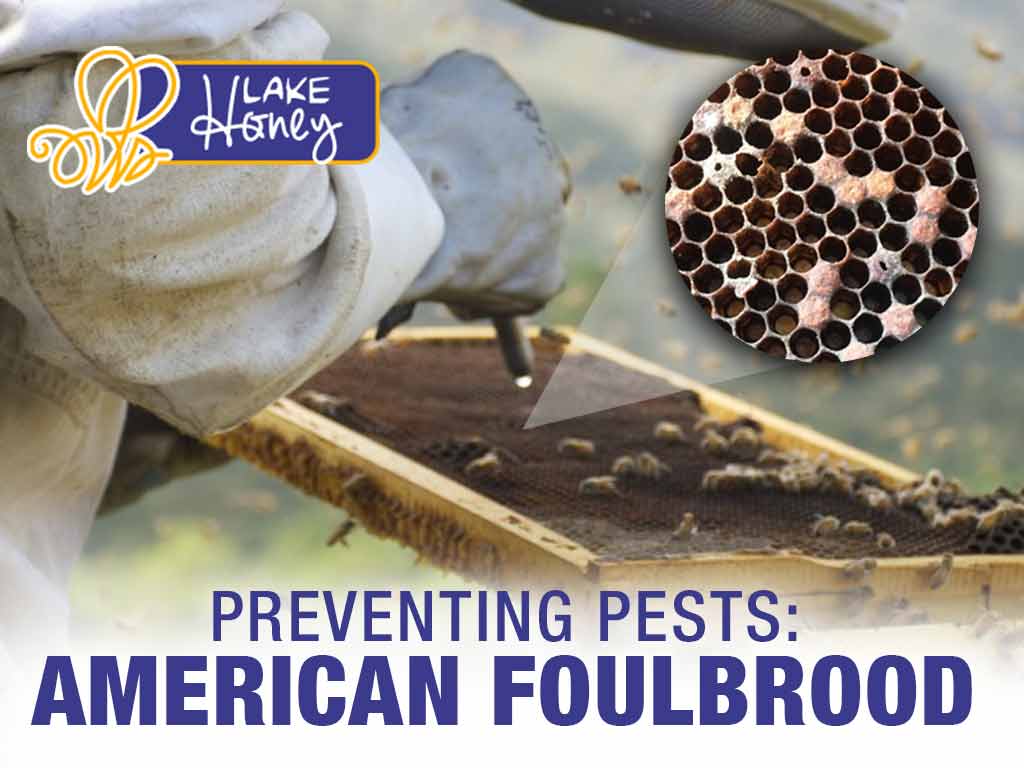As a beekeeper, one of the most important things you will do is provide your bees protection from pests, predators and parasites that could threaten to invade the colony. However, some threats are more deadly than others. That includes American Foulbrood.
What is American Foulbrood?
The American foulbrood is one of the deadliest threats to the honeybee population. American foulbrood is a bacterial disease and can infect the strongest to the weakest hives in your apiary.
American foulbrood typically affects bee larvae in the first few days of life. Often passed from nurse bees to the larvae, the bacteria then begin to multiply in the larvae’s gut. Eventually, the larvae die, and the diseases continues to spread throughout the colony. More serious infections can affect a large population of the brood, leading to a weakened colony. Once week, the hive is vulnerable to other predators, including robbing bees, which can then carry the disease back to their own hives.Eventually, the hive can become so week that it dies.
There is no cure for American foulbrood, and typically requires destruction of an infected hives or materials.
How do I protect my hives from American Foulbrood?
The only way to protect a hive from American Foulbrood is prevention. By putting a few best practices into place, you can quickly recognize and deal with American Foulbrood before it becomes a major problem for your hive, or hives. The following are a few of things beekeepers can do to keep their colonies safe.
Colony management
Brood combs should be checked at least twice a year for signs of American Foulbrood. Typically, spring and autumn are the times you should be checking. While inspecting the colony, beekeepers should remove each brood frame from the colony, along with the bees. Some tell-tale signs that you may have an American Foulbrood infection – irregular brood patterns (a mixture capped and uncapped cells), sunken, darkened, or greasy looking cappings, and perforated cappings.
Because American Foulbrood can be spread easily on tools, beekeepers should also clean equipment between hives and be careful not to mix up materials between hives.
Barrier management
Another way to protect hives from pests and diseases is through barrier management. American Foulbrood is easily spread between hives through materials and equipment that have been contaminated with the bacteria. Since there is no way to know if your tools have been infected, it is best to ere on the side of caution.
With the barrier management system, you separate hives, or apiaries, into different units. Once divided, this keeps potentially contaminated bees, combs, honey, and hive components from going from one hive to another. The adoption of this system can also enhance traceability, biosecurity, and quality assurance aspects of the beekeeping enterprise, as well as building on best practice principles.
Hygiene behaviors
Some bee colonies have shown that they have an increased tolerance of American Foulbrood through their own genetic traits. This tolerance can be attributed to the hygienic abilities of the bees, which help them to better detect, uncap and remove the infected brood. While this trait is beneficial, it is not enough to completely manage an infestation of American Foulbrood. Other management practices must also be in place to keep the colony healthy.
What can I do if I discover an infestation?
If you discover that one or more of your hives has been infected by American Foulbrood, immediate action is recommended. Because American Foulbrood is easily transmissible from hive to hive, burning a colony is the most recommended way of preventing any further spread of the disease. But you will need to be cautious about how you do this.
While it may seem risky, burning a hive is the safest and most effective way to rid your yard of American Foulbrood. Ideally, on the same day you discover the disease, you would burn your hive on site after dusk. Waiting until dusk means there will be workers and foragers in the colony, which prevents them from taking the disease to another healthy colony.
Safely, and effectively, burning your hive to prevent the spread of American Foulbrood includes these steps:
- Close off the hive to prevent bees and other hive materials from evading the destruction.
- Dig a large hole and start a fire.
- Once the fire is burning, add the hive and all its contents to the flame. You will also want to get rid of any tools or equipment that might have been used on contaminated materials.
- Once the hive is burned to ashes, bury the ashes.
Getting help
If you are inexperienced with this type of problem, your local beekeeping community is a great resource. Most new beekeepers find it very beneficial to learn from the experience of others who may be dealing with similar issues. You can join a local beekeeping club or find one online to stay connected with other bee enthusiasts.

